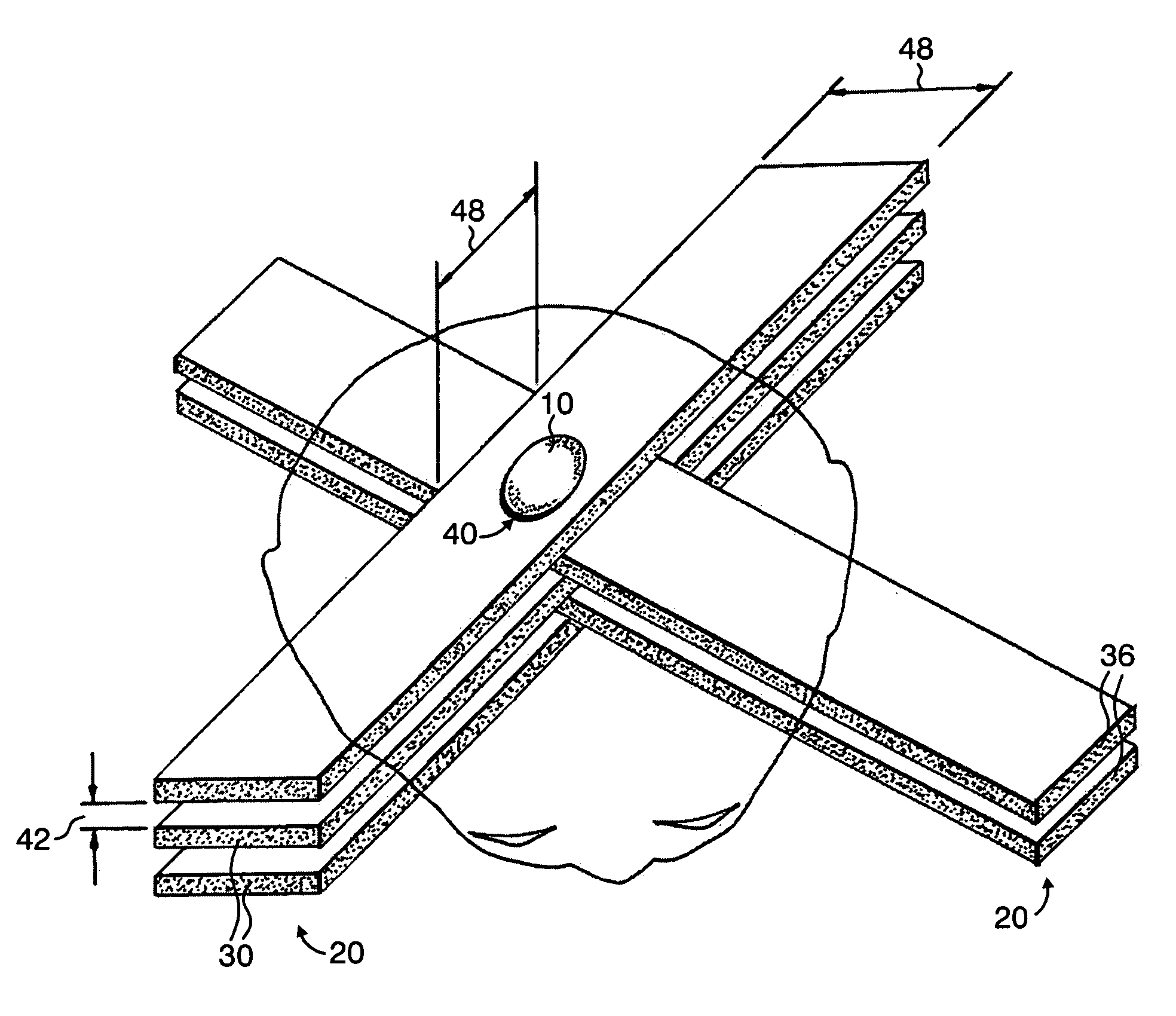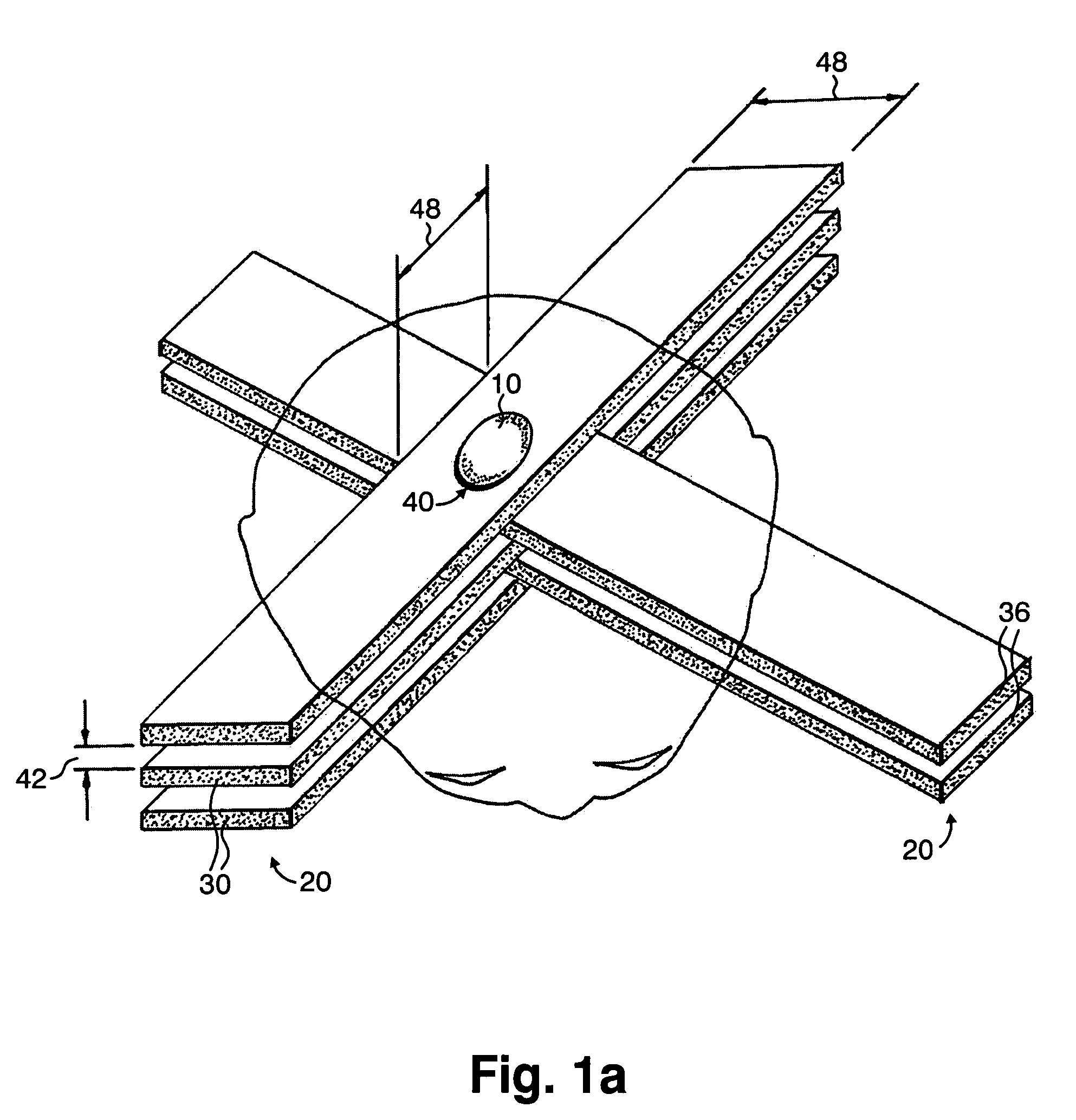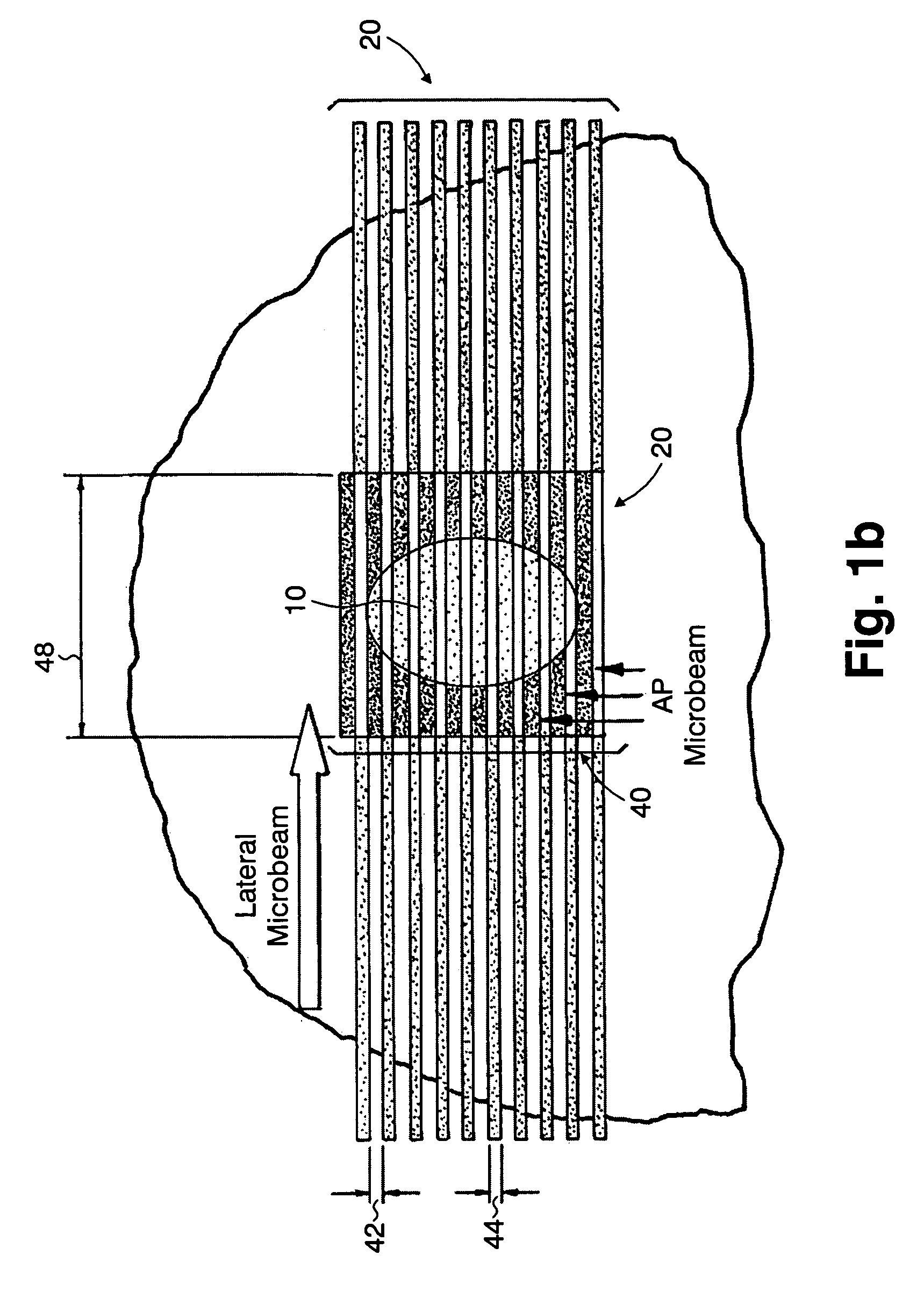Methods for implementing microbeam radiation therapy
a radiation therapy and microbeam technology, applied in radiation therapy, x-ray/gamma-ray/particle irradiation therapy, therapy, etc., can solve the problems of limited effect of orthodox radiation therapy on deep pulmonary, bronchial, esophageal tumors, and difficult to achieve the goal of treating central nervous system (cns) tumors, etc., to enhance the therapeutic dose, broad beam effect, and enhance the in-beam absorption of microb
- Summary
- Abstract
- Description
- Claims
- Application Information
AI Technical Summary
Benefits of technology
Problems solved by technology
Method used
Image
Examples
example
[0156]The following study was carried out at the National Synchrotron Light Source (NSLS), Brookhaven National Laboratory, Upton, N.Y., 11973. The results show the efficacy of gold nanoparticles combined with BIMRT. Mice with subcutaneous murine mammary carcinoma tumor EMT-6 tumor inoculated behind their neck were treated with the BIMRT of the present invention. The microbeam arrays had a 0.68 millimeters (mm) beam thickness and 1.36 mm center-to-center beam spacing, i.e., 0.68 mm inter-beam spacing. The gold nanoparticles used in the study were about 1.9 nm in diameter. At the ninth day of inoculation, when the tumor sizes averaged about 100 mm3, the mice were randomized in five groups of seven (7) mice each for the following treatments: Group A: 55 Gy BIMRT; Group B: 55 Gy broad beams (bidirectional, 2×27.5 Gy); Group C: 35 Gy BIMRT; Group D: 35 Gy BIMRT with gold nanoparticles; and Group E: Unirradiated controls. The gold nanoparticles, 0.2 ml in volume, were injected via the tai...
PUM
 Login to View More
Login to View More Abstract
Description
Claims
Application Information
 Login to View More
Login to View More - R&D
- Intellectual Property
- Life Sciences
- Materials
- Tech Scout
- Unparalleled Data Quality
- Higher Quality Content
- 60% Fewer Hallucinations
Browse by: Latest US Patents, China's latest patents, Technical Efficacy Thesaurus, Application Domain, Technology Topic, Popular Technical Reports.
© 2025 PatSnap. All rights reserved.Legal|Privacy policy|Modern Slavery Act Transparency Statement|Sitemap|About US| Contact US: help@patsnap.com



